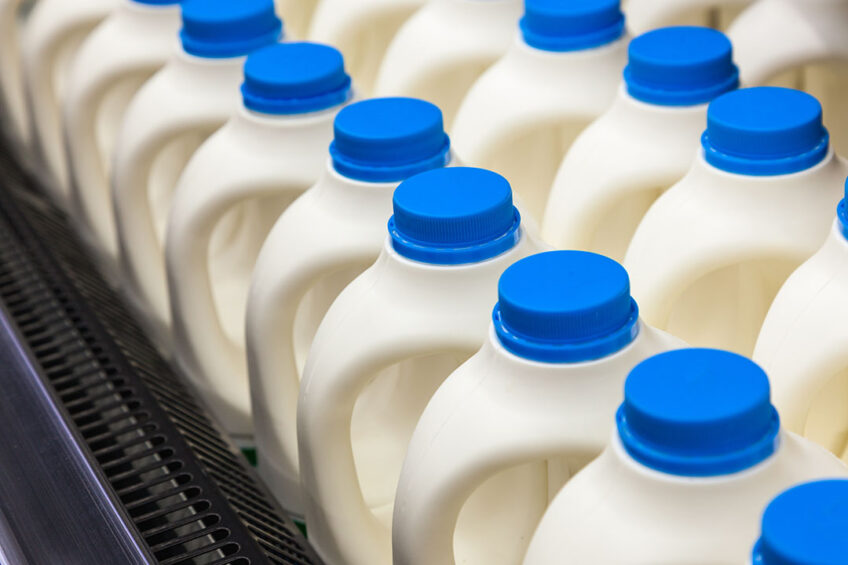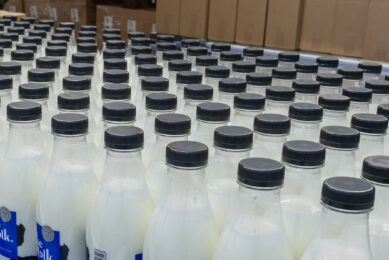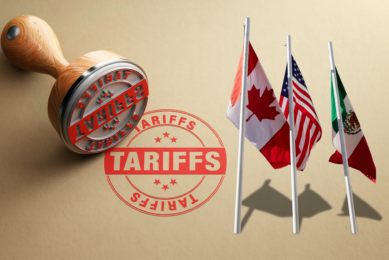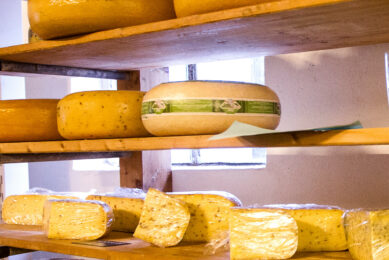Canada’s supply management system: A hot topic

Canada’s supply management system has been a talking point for as long as it has existed. Understandably, trade partners want it dismantled, but you would be hard-pressed to find a Canadian dairy farmer who will speak against the system. But is the Canadian dairy industry competitive and sustainable? The recent report Supply Management 2.0 suggests it is not and proposes a 4-step plan to improve the industry.
Co-authored by Sylvain Charlebois and Jean-Luc Lemieux from the Agri-Food Analytics Lab at Dalhousie University and Simon Somogyi at the Arrell Food Institute, both in Canada, the report explores issues in the supply of dairy products in Canada and opens up discussion around creating a more sustainable system going forward. It outlines a 20-year plan for supply management to incentivise farmers to adapt to a more liberalised market and to become competitive in niche and premium export markets.

Supply Management 2.0: 4-point plan
- Create a voluntary programme for dairy farmers to exit the industry
- Make significant changes to the Canadian Dairy Commission (CDC)
- Remove interprovincial trade barriers on dairy products and create an innovation fund for the sector
- Initiate a 20-year plan to reduce general tariffs, develop an exporting strategy, create a Canadian brand and provide incentive for innovation.
Recognising that full liberalisation would be too radical a shift, especially now, the authors conceded that dismantling supply management is currently not a viable solution.
“The pure free-market economic model tells us that the Canadian dairy industry cannot currently compete with the marginal production costs of dairy producers in other countries,” the report said. “While free-market economics may produce an efficient outcome, it is not the optimal situation when we consider the livelihood of farmers, our rural economy and our values as Canadians.”
 Exit
Exit
In the 4-step proposal, the authors first suggest the federal government initiate a voluntary quota buyback programme of equal value to the concessions made to foreign competition in recent trade deals. In agreeing to a buyout, farmers would be fully compensated, allowing them to start anew in another industry. The authors’ rationale is that it would be wiser to exit on one’s own terms than to be forced out by foreign competitors, and doing so would make room for growth for those who wish to stay. Dairy Farmers of Canada (DFC), the advocacy group representing Canada’s dairy farmers, said now is not the time to reduce domestic milk production.
There is an implication in the report to reduce the level of domestic production, with a buyback program, when farmers will be striving to maintain and grow markets at a time when domestic food security is even more relevant,” said Pierre Lampron, president of DFC.
“Supply management ensures that Canadian consumers have reliable, year-round access to high-quality milk produced within our own borders according to some of the most stringent standards in the world,” he continued. “Now more than ever, Canadians recognise the importance of self-sufficiency in our food production – the pandemic has highlighted the weakness of models that rely disproportionately on foreign production.”
 Transparency
Transparency
The second proposal suggests making significant changes to the CDC in order to improve transparency, particularly around how price is determined.
Co-author, Associate Professor at the University of Guelph and Arrell Chair in the Business of Food Simon Somogyi said the CDC determines the price of milk from the supply perspective. More transparency is needed with regards to how that price is determined, he said.
![]() Global dairy market
Global dairy market
Overview of prices for: raw milk, dry whey, skimmed milk powder, cheese and butter, as well as global dairy trade and world prices for dairy products.
The report recommends adopting a pricing formula that takes a more value-chain approach by incentivising the formation of cooperatives between small farms in the region, with a higher farm-gate price for dairy to recognise the input costs of production for smaller producers. The CDC should also consider ways to keep production capacity in all regions to support dairy processing, said the authors.
 Trade barriers
Trade barriers
With this in mind, the third recommendation focuses on the removal of interprovincial trade barriers on dairy products and the creation of an innovation fund for the sector. The removal of interprovincial trade barriers would help promote the trade of artisanal dairy products. An innovation fund, they say, would entice dairy farmers to innovate and develop new products and markets while keeping in mind consumer values, such as sustainability, affordability and animal welfare. Innovation would also allow Canadian dairy producers to take advantage of export opportunities, said Somogyi.
“Canada has completely missed the Asian infant formula boom,” he said, pointing to the Chinese melamine scandal as a prime opportunity. “Billions of dollars have been spent to create infant formula for the Chinese market where Chinese consumers don’t trust the locally made products.
Technology is playing against dairy farmers,” Somogyi added. “Milk, in the future, might not need to come from a farm.”
Lampron said investment and innovation already contribute to the improvement of the sector, though. “Unlike some other sectors, the stability of supply management has actually promoted investments and innovation, as demonstrated by gains in efficiency and sustainability,” he said. “For example, since 2011, milk production has reduced its carbon footprint by 7%.
Many of those elements have progressed because of the stability provided by supply management – not in spite of it,” he added. “Changing the system now would put that progress at risk.”
Somogyi, however, pointed to other potential disruptors on the horizon, emphasising, again, the need for innovation. The dairy sector in Canada, he said, should be alarmed by the rise of a generation that “thinks very differently about dairy than its predecessors.” He also pointed to precision fermentation as a possible game changer.
 Correctly balancing rations is key in dairy cow nutrition
Correctly balancing rations is key in dairy cow nutrition
Correctly balancing rations is key to making the most of forage this winter and an important aspect of rumen efficiency and dairy cow performance.
“The research seems to suggest that in the next 10–15 years, precision fermentation – basically, a bio-digester that can make milk that is chemically identical to what a cow can make – will be available to businesses, particularly to processors,” he said.
“Technology is playing against dairy farmers,” Somogyi added. “Milk, in the future, might not need to come from a farm.”
 Future-proof plan for dairy sector
Future-proof plan for dairy sector
Finally, the report recommends initiating a 20-year plan to reduce general tariffs, incentivise innovation, develop an exporting plan and create a Canadian brand.
Lampron said work on a future-proof plan for the dairy sector is already in the works. “The dairy sector has evolved over time with a view to the future,” he said, pointing to current cross-sector collaboration.
DFC began working closely with provincial dairy farm organisations, Dairy Processors Association of Canada and the federal government in 2019. Their aim, he said, is to ensure the dairy sector remains attuned to emerging consumer trends and well-positioned in the sustainable economy of the future.
[It’s] a vision which will continue to ensure that the dairy sector is an important source of jobs, growth and innovation, food security for Canadians and high-quality domestic dairy for future generations,” Lampron added.
Farmers weigh in
It’s difficult to find a single dairy farmer in Canada who will speak out against supply management. Ontario-based dairy farmer Patrick Dawson (not his real name) agreed to speak anonymously, saying he is afraid of the repercussions of speaking honestly on the record.
Dawson was once a big promoter of supply management but feels the sector has lost touch. The industry, he said, has been weakened by trade deals and consumer confidence, and no longer has a truly Canadian brand. He is critical of the fact that this Supply Management 2.0 plan has come from a public institution and not the marketing board that is supposed to have farmers’ best interests at heart. Criticisms like his are few and far between, though. Most dairy farmers in Canada express gratitude for the system.
4th generation dairy farmer Scott Judd of Shawville, Quebec listened to the points made by Charlebois in a recent audio interview and said he’s concerned about the proposal.
I realised quickly that his idea of dairy farmers leaving the industry are those farmers who he deems not progressive enough to continue, including farmers who are happy with their herd size,” he said.
Judd expressed concerns over Charlebois’ use of the word ‘efficiency’, which he says pits the west against the east and fits his agenda in terms of tearing apart the interprovincial agreements that farmers respect. Most of Canada’s dairy is produced in 2 provinces: Ontario and Quebec.
Judd said the report’s comments about the CDC are not unwarranted, though. “There are always improvements that can be made,” he said. Judd believes Canadian dairy farmers could become exporters, but of quality milk and not industrial milk. Industrial milk can be made cheaper in New Zealand and on large, corporate farms. “We do not need to compete against those farmers,” he said.
In fact, the many criticisms Charlebois has against supply management are the very reasons Judd loves the system. “Supply management shares the cost among all farmers, whether they be efficient in his mind or inefficient,” he said. “It levels the field, it makes our prices predictable – not high and not low, but predictable and fair.”
 Canada: Funding for dairy sector and worker health
Canada: Funding for dairy sector and worker health
Funding of more than CAN$ 2.5 million (US$ 1.9 million) will be provided to support the dairy sector in Canada and protect worker health.
Harm Kelly, a cash crop and dairy farmer from Dunnville, Ontario is also grateful for supply management, especially now. “I know that through this Covid pandemic, Canadian dairy farmers – although nervous about the impact on the supply chain – are so thankful,” he said. “Because of supply management and the strength of our marketing boards and our processing sectors’ collective efforts, we have been able to nationally coordinate milk production needs in response to processing challenges across the country. “Those costs have been shared among all farmers equally, so the processing bottlenecks did not unduly ruin certain pockets of producers,” he added.
“As national food security becomes a more pressing issue, and global trade proves to be more uncertain than we would like to admit, I think the benefits of supply management shine bright in comparison to other marketing models,” Kelly concluded.
Join 13,000+ subscribers
Subscribe to our newsletter to stay updated about all the need-to-know content in the dairy sector, two times a week.










